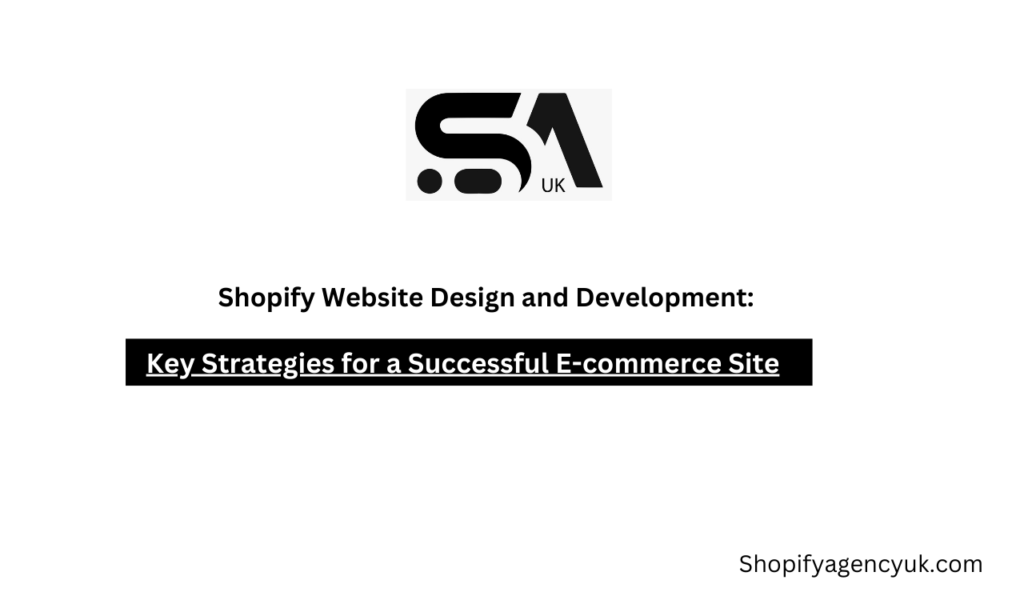Shopify Website Design and Development: Key Strategies for a Successful E-commerce Site
Today’s online market is booming, and Shopify has become one of the popular choices for the e-commerce domain. From my experience as a web developer and e-commerce specialist, I can claim that a proper Shopify website is essential. In this publication, I will provide insights on the most successful strategies for Shopify website design and development so that you can take away advice to create a genuinely exemplary e-commerce store.
What is Shopify Website Design?

The Shopify website design process is about creating the shop layout and design by maintaining the attractive and user-friendly structure of the particular online store hosted on Shopify. Along with extravagances such as the layout, the color scheme, and the typography, the visual aspect of the store, which contributes to the brand’s look and feel, is the most important thing. I think visual design should be more than just about how something looks; it should be about the user’s better experience, the clarity of the product, and the purchase of the product without any problems.
The Importance of Shopify Website Design and Development
Personally, I think the connection between the successful creation of a Shopify website and investing in it is solid, and I have seen this situation on so many occasions!
It encourages user interaction by providing easy access to related goods and services.
It allows for an easy online buying process, making the entire mechanism more accessible and practical.
- It enhances brand credibility and customer trust.
- It rises to the top of the search engine results list, leading to more organic traffic.
- It also ensures a competitive advantage for your store on the market.
Critical Elements of a Successful Shopify Website Design
1. User-Friendly Navigation
My top priority is the straightforward, quick, and efficient navigation system. It enables customers to find their way through the site easily and thus greatly enhances their experience. While I prefer simple menus rather than cluttering them and combining categories with filters, I believe the latter option is more effective in search.
2. Mobile Optimization
Recognizing that over half of all e-commerce transactions happen on handheld devices, I ensure that all Shopify websites I create are mobile-friendly. Although most of the themes on Shopify already feature mobile responses, I carefully check that my website’s mobile version runs well across different screen sizes.
3. Fast Loading Speed
It has been evident that page speed is directly connected to the user experience and SEO rankings. My techniques for minimizing failing times are as follows:
- Using lightweight images.
- Abstain from third-party apps whenever possible.
- Using built-in features that Shopify offers.
The faster the page, the higher the user satisfaction level and, consequently, the lower the bounce rates.
4. High-quality visuals and Media
Most of the time, I have found that images and videos are among the critical factors in the website design process, and they play a vital role. In some cases, it may be more profitable to use high-quality images that allow the customers to see the products in detail, which is better for increased willingness to buy them. Incorporating product videos and multiple images that unveil various sides of the product, in the main, is behind such a rich browsing experience.
5. Consistent Branding
One important thing that I have learned about branding is the belief that it brings clarity and trust. It is proven that consistency across the board reinforces recognition and trust. Each and every element, starting from the color and font and finishing with the tone of voice, should represent the brand’s character. I choose a unified tone that imparts a professional appearance and talks to the intended audience.
6. Clear Calls-to-Action (CTAs)
My trick is to put the proper CTA wherever it might be needed, for example, “Buy Now,” “Add to Cart,” or “Learn More.” I prefer to use Short and feasible language to attract visitors to the needed site activity.
Essential Shopify Website Development Practices
My practices are based on personal observations of the situation and are derived from the following observations:
1. Choosing the Right Theme
The selection of the appropriate theme is an essential part of the process and is closely connected with the selection of the business and design convention. I always ensure the themes include easy-to-customize options and are faster and more mobile.
2. Customizing the Theme for Uniqueness
I generally customize the already chosen designs to make them unique. This customizing process mainly involves moderately changing the heading sizes, color adjusting, or redesigning features. Sometimes, I am forced to create specific features that use the Shopify Liquid coding language to suit the customers better.
3. Setting Up Essential Shopify Apps
I have carefully integrated additional apps that will not complicate the website’s work but improve its functionality. They may include SEO tools, social media integration, and recovery tools, which are effective in the incidence of abandoned carts.
4. SEO Optimization

My point is to constantly optimize SEO as the basis for obtaining organic traffic with all the elements implied by it, starting with the titles of the products, their descriptions, alt Text, and finally, meta descriptions. Not to mention using canonical URLs, being quick with loading the page, and even linking to other sources rigorously to further add to the site’s features.
5. Integrating Payment Gateways and Security
My work involves finalizing the transaction process by arranging different high-quality payment gateways and implementing security measures through SSL certificates to protect the client’s sensitive personal data.
6. Testing and Quality Assurance
Before the site is set up, I always test it on different devices and browsers. I pay attention to the speed of the site, its responsiveness, functionality, and aesthetics, and I fix any issues that may come up to ensure a successful customer experience.
By staying with these strategies and best practices, I have a long record of completing Shopify websites for my clients. Remember, the most critical aspect of success in the e-commerce industry is a well-designed and well-developed Shopify store!
